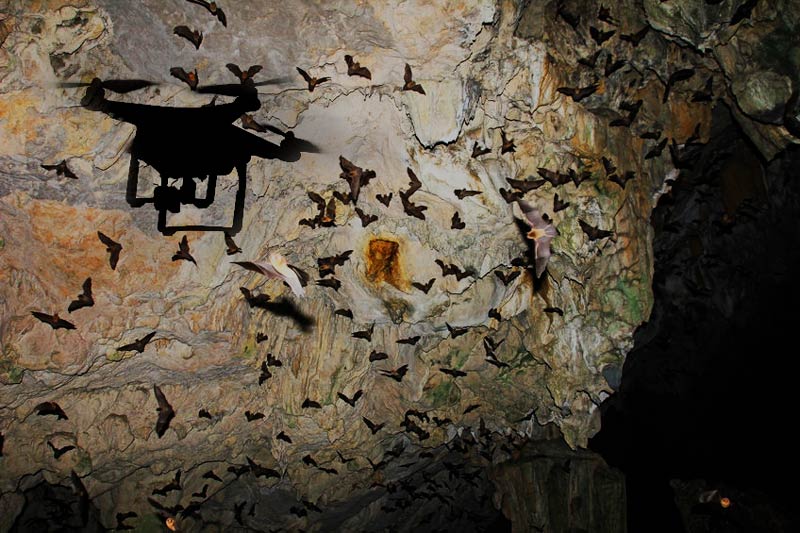
News
With “Chirocopter” Bat-Detecting Drone, Scientists Are No Longer In The Dark
With “Chirocopter” Bat-Detecting Drone, Scientists Are No Longer In The Dark
Bats are by nature quiet, elusive creatures, using echolocation to navigate the darkest recesses of caves – while drones it turns out, sound rather like bees.
This has posed a problem for scientists in the past who wished to take advantage of the flight of UAVs in the collection of bat colony and flight data, as the noise drowns out the ultrasonic pulses of the bats.
Now, a report has been published in Methods in Ecology and Evolution, whereby a method of isolating the noise made by a drone in flight has been described, allowing scientists to detect and record bats that fly past the drone as it hovers in the middle of their flight path.
Known as the ‘Chirocopter’, which is a play on the scientific term for bats, Chiroptera, the drone carries a payload consisting of a microphone with which to record the ultrasonic chirps made by the bats for echolocation, as well as a thermal camera to detect the body heat of the bats.
That’s miles ahead of the dynamic duo’s TV signal-seeking BatDrone:
Ahead of its time: Batman deploys the BatDrone in order to trace the source of Minstrel’s TV broadcast signal. pic.twitter.com/jtU6yag49v
— 60s Batman ???? (@60s_Batman) March 9, 2018
Flying the Chirocopter at the entrance of a cave in New Mexico that is home to approximately 800,000 Brazilian free-tailed bats, the scientists were able to capture 3,847 individual echolocation signals as the bats returned home at dawn. These signals, collected at a rate of 46 echolocation chirps per minute, corresponded with thermal bat imaging data, proving a successful and viable method of data collection.
This is quite a feat, as the bats flight on their return is very dense, and at times the bats reached speeds of over 100 kilometres an hour (it is also noted that no bats were harmed in the process!).
To achieve this, they tested the drone before the mission to New Mexico with various configurations and payloads to create a characteristic drone noise profile which they baffled using a styrofoam ball attached to the top of the drone.
Chirocopter – a drone for recording bat A/V at altitudes with a styrofoam ball attached as a baffle to reduce ultrasonic noise. The results seem promising for studying bat flight behavior (advanced view, open access) https://t.co/UVFESdLXV4 pic.twitter.com/K7CdFrhSOY
— Susan Tsang (@batgirl_susan) March 6, 2018
Prior to this, collection of bat colony data has been collected using ground and tower-based sensors.
With aerial bat detection now a proven technique, the scientists are no longer in the dark so to speak. Their next step is to extend the program to increase the audio-recording capabilities of the drone to 20 Hz-20 kHz, an audible range which would allow the recording of other animal sounds.


















